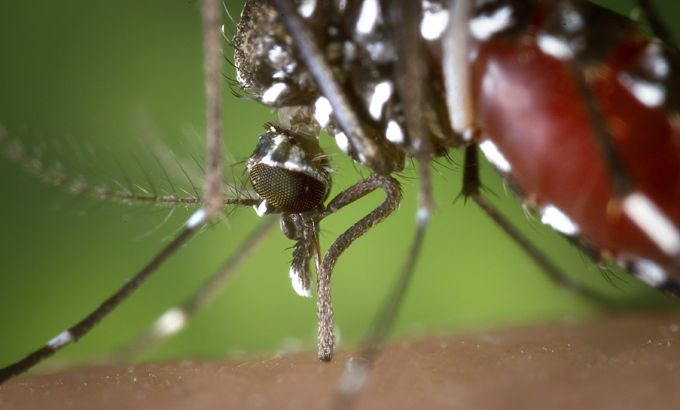US sees surge in West Nile virus cases
The mosquito-borne outbreak has killed 41 people and infected more than 1,000 so far this year.

The US is experiencing one of its worst ever outbreaks of the West Nile virus, with the number of cases of the mosquito-borne infection jumping nearly 60 per cent since last week.
The US Centers for Disease Control (CDC) said on Wednesday that 1,118 cases and 41 deaths had been reported across the US so far this year, up from fewer than 700 cases and 26 deaths just one week ago.
Keep reading
list of 4 itemsWorld’s coral reefs face global bleaching crisis
Why is Germany maintaining economic ties with China?
Australia’s Great Barrier Reef suffers worst bleaching on record
“We’re in the midst of one of the largest West Nile virus outbreaks ever seen in the United States,” said Dr Lyle Petersen, director of the CDC’s division of vector-borne infectious diseases.
The number of infections reported through the third week of August is the highest it has been since the virus was first detected in the US in 1999, the CDC said.
The worst US outbreak occurred in 2003, with 9,862 cases and 264 deaths that year.
More than half of this year’s cases are in Texas, but the disease now has been detected in 47 states, and 38 states have reported cases in humans, with only Alaska, Hawaii and Vermont reporting no cases.
About 75 per cent of this year’s cases have been in Texas, Mississippi, Louisiana and South Dakota, officials said.
About 56 per cent of cases are of the more serious type that can cause paralysis, meningitis or encephalitis, the CDC said. The remaining 44 per cent are the milder form of West Nile Fever.
Cases usually flare up in the summer because the illness is most often transmitted from infected birds to people by mosquitoes.
Victims may suffer fever and aches that can become severe or even cause death, especially in the elderly, children and other at-risk groups. There is no specific treatment for the infection.
Symptoms are often mild and many people stricken do not see a doctor, meaning cases are likely under-reported.
Experts think the mild winter, early spring and very hot summer helped stimulate mosquito breeding and the spread of the virus.
CDC officials are also looking into the possibility that the virus mutated, but so far have no information showing that happened, Petersen said.
Texas emergency
It is not clear why Texas is experiencing so many cases, but it is alarming.
Dallas, where a health state of emergency was declared this month, is experiencing an unprecedented epidemic, said Petersen.
Latest figures show there have been 640 cases of the disease in Texas. Texas state health officials said 23 people had died, including 15 in north Texas.
“Dallas has been hardest hit,” Dr David Lakey, commissioner of the Texas department of state health services, said.
So far, 11 deaths have been reported in Dallas County this year, compared with 10 in the period between 2003 – when the disease was first detected in Dallas – and 2011.
Officials last week started aerial spraying for mosquitoes in Dallas county. But it is too soon to measure the effect – it takes between three and 14 days for people to develop symptoms after being infected by a mosquito.
The best way to avoid West Nile disease is to avoid mosquito bites.
Recommended strategies
Insect repellents, screens on doors and windows, and wearing long sleeves and pants are some of the recommended strategies.
West Nile virus was first diagnosed in Uganda in 1937, but no cases were reported in the US until 1999 in New York. The virus gradually spread across the country.
It peaked in 2002 and 2003, when severe illnesses reached nearly 3,000 and deaths surpassed 260. Last year was mild, with fewer than 700 cases.
Only about 1 in 5 infected people get sick. Early symptoms can include fever, headache and body aches. Some recover in a matter of days.
But one in 150 infected people will develop severe symptoms including neck stiffness, disorientation, coma and paralysis.